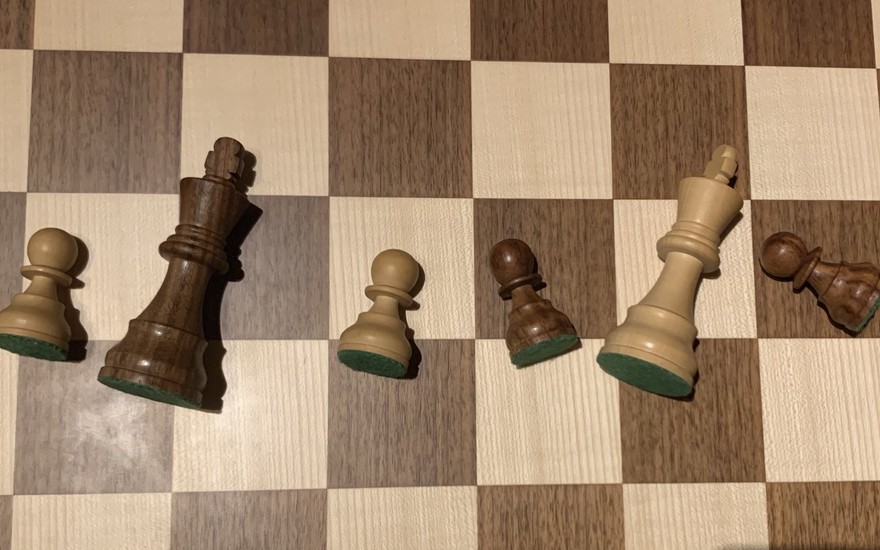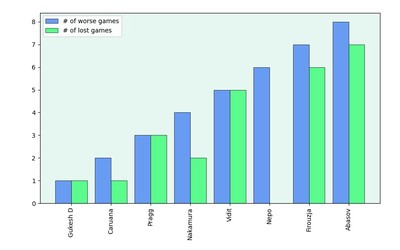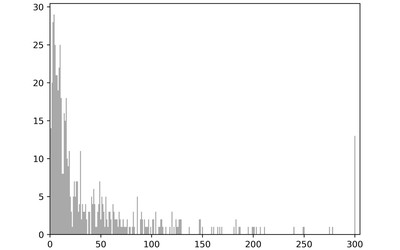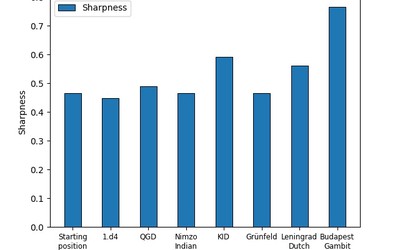
King and Pawn Endgame Basics
The basic ideas of king and pawn endgames are relatively easy to understand, but they are applicable in a lot of different endgames and will save you many points. In this post, I will introduce you to the basics of king and pawn endings.Opposition
Direct Opposition
The direct opposition is the simplest form of the opposition and it occurs when both kings face each other with only one file ore rank in between them.
The power of the opposition is best illustrated in a king and one pawn vs. king endgame. In this first example, white gains the opposition and therefore wins the game.
The situation changes however when black can gain the opposition and black is then able to hold a draw.
Distant Opposition
The opposition doesn't only exist when the kings are one square apart. If the kings are on the same file, rank or diagonal and the number of squares between the kings is odd, then the player who moves will lose the opposition.
If the kings aren't on the same file, rank or diagonal, there is also a rule to work out who has the opposition. In such situations, you want to reach a position where the kings form a rectangle where they stand on the same coloured square and it's your opponent's move.
Triangulation
Triangulation is an important maneuver with your king, where you essentially lose a tempo to force your opponent into Zugzwang. In king and pawn endings it's mostly used to gain the opposition.
Examples
King+Pawn vs King
Non-rook pawn
We have already seen two very common king+pawn vs king positions in our discussion of opposition. There we saw that the side which gains the opposition will reach their goal (the stronger side wins, the weaker side draws). This means that the stronger side always wins, if they get their king in front of the pawn with at least one rank between them.
Rook pawn
If the remaining pawn is a rook pawn, the weaker side has much higher drawing chances. The reason for that is that they can either blockade the pawn with their own king and it can't be forced out of the corner or they can keep the stronger side's king in front of their pawn.
The rule of the square
If your king can't support the pawn, you can determine if the other side's king can reach it with the rule of the square. It states that the king will catch the pawn, if it can step into the imaginary square which you get by drawing it's diagonal from your pawn to the back rank.
I think that it's best illustrated by the following example:
King+2 Pawns vs King
Doubled pawns
If the doubled pawns are rook pawns, the situation is the same as having one rook pawn against a lone king.
Otherwise the stronger side will always win, unless they lose one pawn immediately.
Connected pawns
The stronger side always wins with two connected pawns since the backward is indirectly defended. If the weaker sides takes it, the other pawn will queen.
Split pawns
When the pawns are split by only one file, they defend each other indirectly. Whenever one pawn is attacked, the other one should be pushed.
The situation gets a bit more complicated when the pawns are two files apart, since the stronger side can't always win.
But black only draws by one tempo and because white is left with a rook pawn in some lines. When the black king is on f6 instead of g6, the position is won for white.
When the pawns are three or more files apart the situation gets simpler: The stronger side always wins, unless one of the pawns can be picked up immediately.
Other important positions
Trebuchet
Outside passed pawn
Having an outside passed pawn allows the stronger side to pick up the other pawns while the weaker side's king has to deal with the passed pawn.
Freezing a pawn majority
In many positions a pawn majority can be fixed when no of the pawns can be pushed. The most common case is when one pawn freezes two, as seen in the example below.
Final thoughts
The principles of king and pawn endings are relatively simple and can be applied in all king and pawn endings. The difficulty in many king and pawn endings lies in deep calculation and noticing small nuances. This is the beauty of king and pawn endgames: when you see the solutions, they are relatively easy to understand, but little mistakes can have big consequences.
You can solve many examples of king and pawn endings on Lichess and test your knowledge and skills.
If you enjoyed the post, please check out my blog and my https://www.patreon.com/jk_182.
More blog posts by jk_182

The Candidates in 12 Graphs
Looking at stats from the 2024 Candidates tournament
Calculating the Sharpness of Different Players
How well does the sharpness score agree with the human intuition about sharpness?
Centipawn Loss Distribution
I'm always interested in values and stats calculated by engines that can give an overview of a chess…